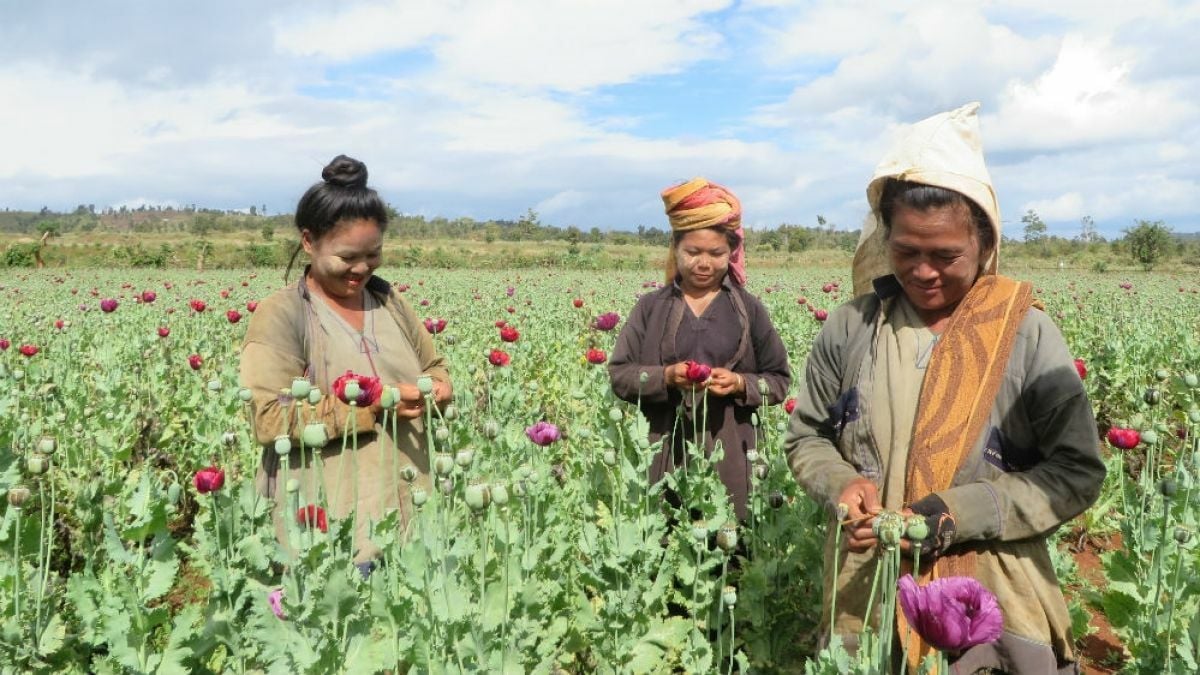Myanmar’s junta growing more opium than ever
Opium poppy cultivation has increased in Myanmar since the 2021 coup

Myanmar has been growing more opium since the 2021 coup, reversing a six-year decline between 2014 and 2020, the United Nations Office on Drugs and Crime (UNODC) has said.
During the first full opium growing season since the military took power in February 2021, Myanmar saw a 33% increase in poppy cultivation and an 88% increase in potential opium yield in 2022, according to Aljazeera.
In numbers, that equates to slightly more than 40,000 hectares of poppy cultivated last year in Myanmar with a possible yield of 790 tons of opium – the highly addictive narcotic that can be processed to make heroin, according to the UN agency.
“The 2022 results confirm a significant expansion is underway of Myanmar’s opium economy,” the UNODC said in a statement released yesterday to accompany the publication of the Myanmar Opium Survey 2022.
A perfect storm of “economic, security and governance disruptions” following the military’s takeover in Myanmar have converged to create the current conditions in which opium cultivation is growing, UNODC regional representative, Jeremy Douglas, said.
Douglas said…
“Farmers in remote often conflict-prone areas in northern Shan and border states have had little option but to grow more opium.”
The Golden Triangle – a jungle territory where the borders of Thailand, Laos, and Myanmar meet – has long been a lucrative hub for the illegal drug trade, and the trend in Myanmar indicates that the region now appears to be reconnecting to the global market.
According to the UN survey, the increase in cultivation has taken place in tandem with the production of synthetic drugs in Myanmar, which have continued to expand, “with the drug economy in the country and surrounding region generating substantial profits.”
The regional heroin trade is estimated to be worth a staggering US$10 billion (US$300 million), while the value of Myanmar’s overall opiate economy ranged up to US$2 billion. A similar situation has occurred in Afghanistan since the Taliban takeover there.
Yields are at the highest estimated level in Myanmar since UNODC started measuring. More sophisticated farming and access to fertiliser were likely the reasons for the average opium yield increasing to almost 20 kilograms per hectare – an increase of 41% compared with 2021. A continued resurgence of opium poppy cultivation in Myanmar will have a significant impact on the wider drug economy centred around the lower Mekong region.
The UNODC’s Douglas addressed the likely regional effect of growing more opium at a news conference in Bangkok Thursday. Douglas said…
“So we’re looking at an increased heroin supply which will largely be feeding into the Asian market itself. There’s still a very significant level of heroin use within China, within Vietnam, within other countries in the region … and this brings with it, of course, challenges for public health systems and the need for harm reduction and other services.
“So we are going to see some impact on the broader region itself.”
Latest Thailand News
Follow The Thaiger on Google News:


























